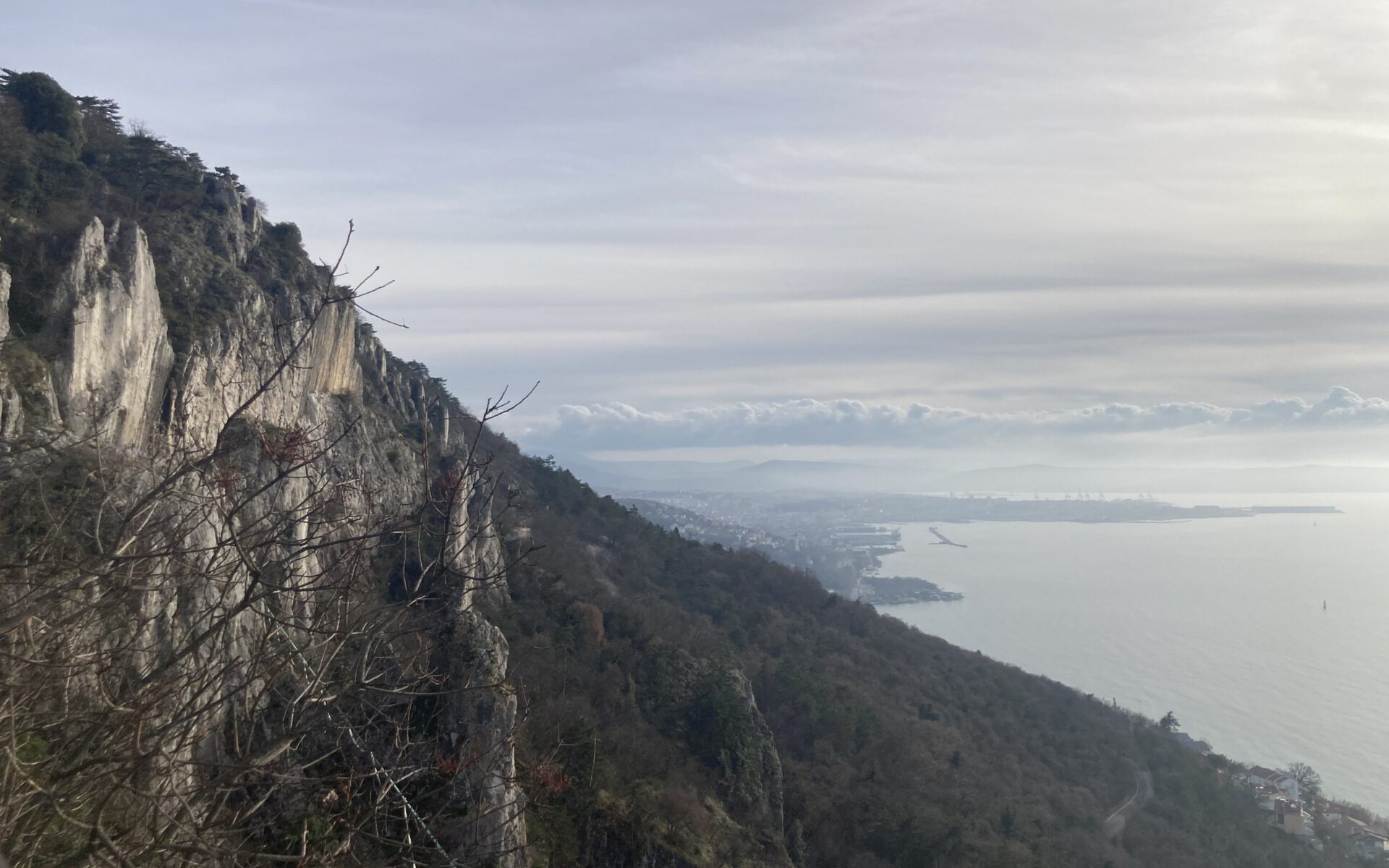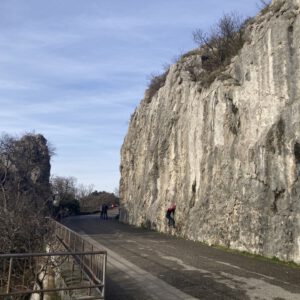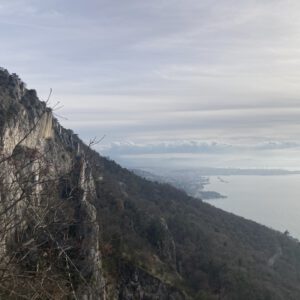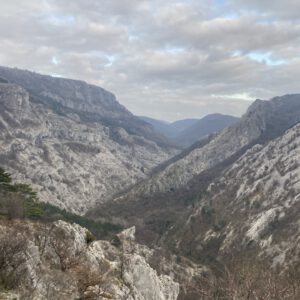For this new years eve, we travelled to the Karst in Trieste. A quick internet research promised well-secured routes, climbing areas close to the city and good food – what else could a climber dream of? Trieste has around 200,000 inhabitants and is characterised by its proximity to Slovenia, Croatia and Austria. During the Habsburg monarchy, Trieste was a Mediterranean harbour and a hub of the Austro-Hungarian economy, which can still be seen today in the imposing buildings from this period. The harbour is still the city’s major economic factor. So it’s no wonder that you can look directly out to the sea from the impressive Town Hall Square. More important for the climbers? The caffeine supply. Trieste is known for its coffee house culture, which is in no way inferior to that of Vienna. As you can see, there is enough cultural program for rest days.
How to get there
We took the ICE from Nuremberg to Augsburg (travel time approx. 1h) and from there the ÖBB night train in direction to Venice (travel time approx. 7,5h). The next morning, we got off in Udine and changed to the regional train to Trieste (travel time 1,5h). We reached the tranquil Adriatic metropolis at around half past seven. Another 15 min later we reached our apartment in the city centre. So in total we‘ve been traveling for round about ten hours.
Where to stay
Triest is a city with over 200.000 inhabitants - therefore you can find a large selection of accommodations. From hotels in the higher price range to small B&Bs to apartments in different sizes, even a campsite is located in Triest. We stayed in an apartment close to Piazza Oberdan, which was great because this is like the central bus station. You can find accommodations through various online platforms.
How to reach the crag(s)
There are two extensive climbing areas around Trieste: Napoleonica and Val Rosandra. Everyone climbing in grade 2 to 8 (french grading system) will find something. Both climbing areas can be reached by local bus lines (40, 41 to Val Rosandra; 42 to Napoleonica) from the center of Piazza Oberdan in around 25 minutes.
For Val Rosandra the bus line depends on what sector your targeting. Bus line 41 in direction Bagnoli is good for all sectors. For the upper Sections you can get out in Sant‘ Antonio in Bosco. For the lower sections you can go on to Bagnoli. For the lower sections you can also take bus line 40 to Dolina and exit in Bagnoli. With this bus line you can also reach the crags near Dolina. Many sectors in Val Rosandra are in walking distance of 20 min from the bus station, some are further away depending on your starting point. But most of them are really easy to find. For Napoleonica take bus line 42 in direction Opicina. Exit the bus in Prosecco. In Napoleonica you reach the first crags after a five minute walk. For the other crags you won‘t walk more than 20 min.
Napoleonica is located north of Trieste city center. On a clear day you can see the entire Trieste bay from there. The south-facing climbing routes are located on an old road, which is now only used by people walking or biking. The road was partially blasted out of the rock. This is also noticeable on the climbing routes that lie directly next to the road. There you climb on sharp ledges or old boreholes. Above and below the road, the rock is intact. Climbing on natural limestone with holes and sinks is much more pleasant here. The quality of the rock varies, some is pretty greasy (close to the street) other areas have great grip. The protection is very good in all sections. New tours are not permitted, so the route is regularly refurbished. Additionally close to the street are many boulder routes. Higher ones and long traverses.
The Val Rosandra, a protected karst valley, adjoins the town to the south-east. There are many sectors. We went climbing near Sant'Antonio di Bosco and Bagnoli. There are beautiful routes and a great view of the valley. Climbing is done on natural structures and the protection is also impeccable. The distance between the bolts is pretty close but on some routes the top bolts are missing (but for us that happened only twice). In contrast to Napoleonica, it is less crowded here. Hikers and trail runners pass by from time to time. Otherwise it is quiet. Only when the wind picks up - sometimes in winter the bora blows in Trieste - it can get uncomfortable in Val Rosandra (due to the geographical location of Napoelonica, it is protected from Bora). The routes are predominantly south-facing, parallel to the wind direction and offer little protection in strong winds.
Tips
In Napoleonica you can find some boulder traverses, some normal and some highball boulder problems. In Val Rosandra you can find some sectors with multipitch climbing (e.g. sector Formai or Falchi). We used the Sidarta climbing guide Istria - Adriatic Coast - Climbing Without Frontiers. It offers a lot of helpful information about the crags in and around Triest. There is also information about the climbing crags in Slovenia and Istria / Croatia. The Climbing guide is written in four different languages (German, English, Slovenian, Croatian).
Over new years eve, we had generally cloudy and foggy weather. The sun managed to break through the clouds only a few times. But due to the proximity to the Adriatic, it was mild and pleasant overall. However, spring (and probably autumn as well) is the best time for a trip to Trieste.
With the app of the local transport association Friuli Venezia Giulia, you have a ticket, timetable and stop information in one place (App Store: tpl fvg). You register in the app, add a credit card (we didn‘t know the other payment options) and then you can buy single tickets, that are activated by scanning a QR Code in the bus. Not everyone needs a credit card or an account: You can buy and activate multiple tickets at once. You find the app here and here.
You forgot your quickdraws or need other climbing equipment? Triest is definitely not Arco but there is a Montura store in Via Mazzini 19 that has some climbing equipment and Avventura Due in Via S. Lazzaro 14.
How to book the trip
The whole journey can be booked at DB International. You get three different tickets from each train operator. Otherwise you can book each ticket separately from DB, ÖBB and Trenitalia (the page is available in German as well).
About the author
Stefanie Brauer & Christian Heine





